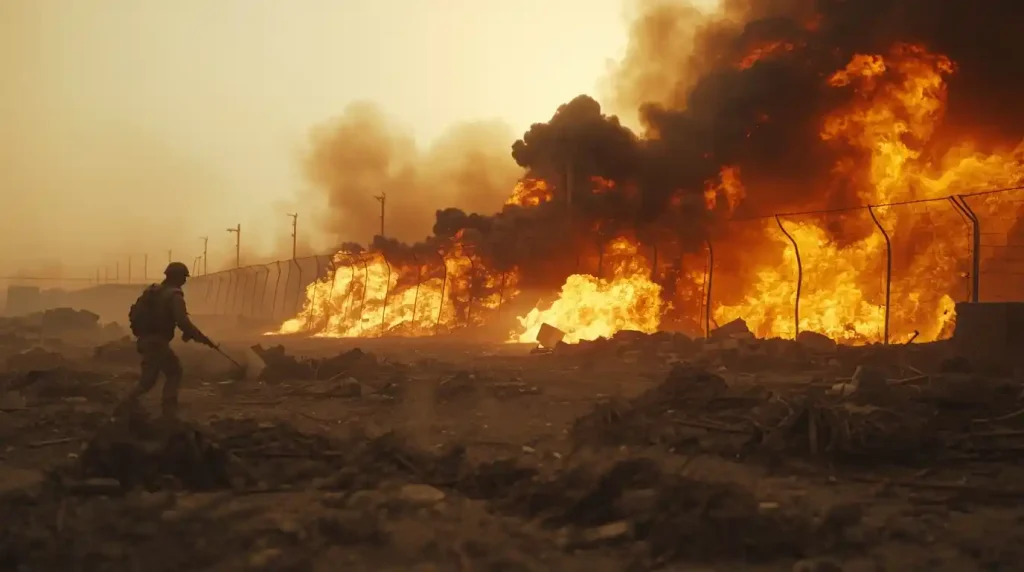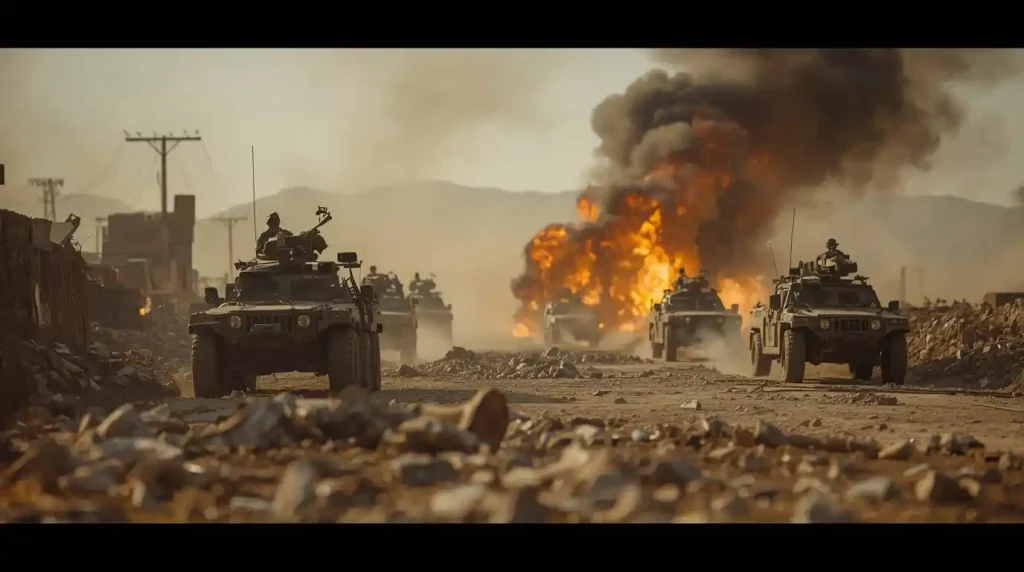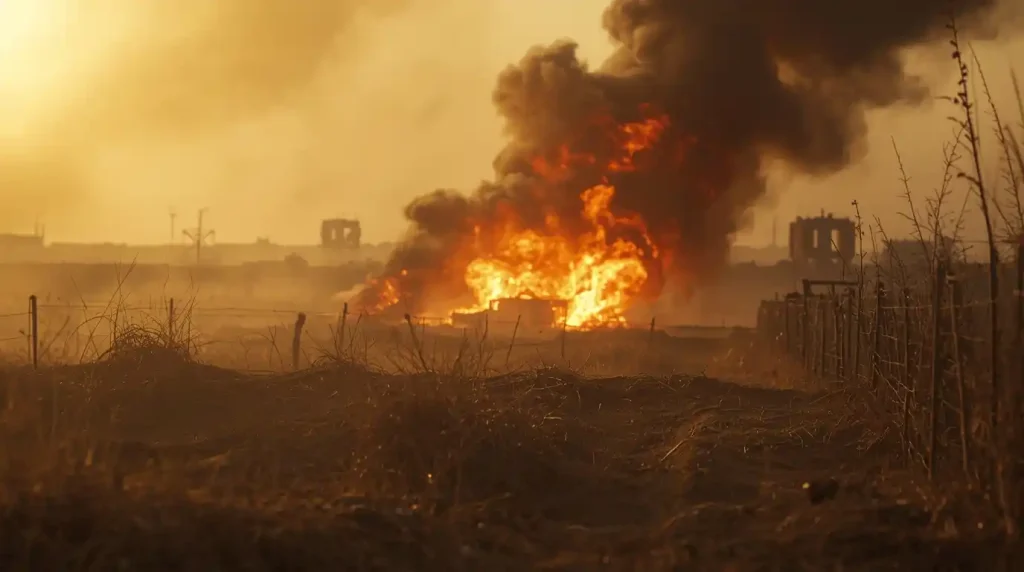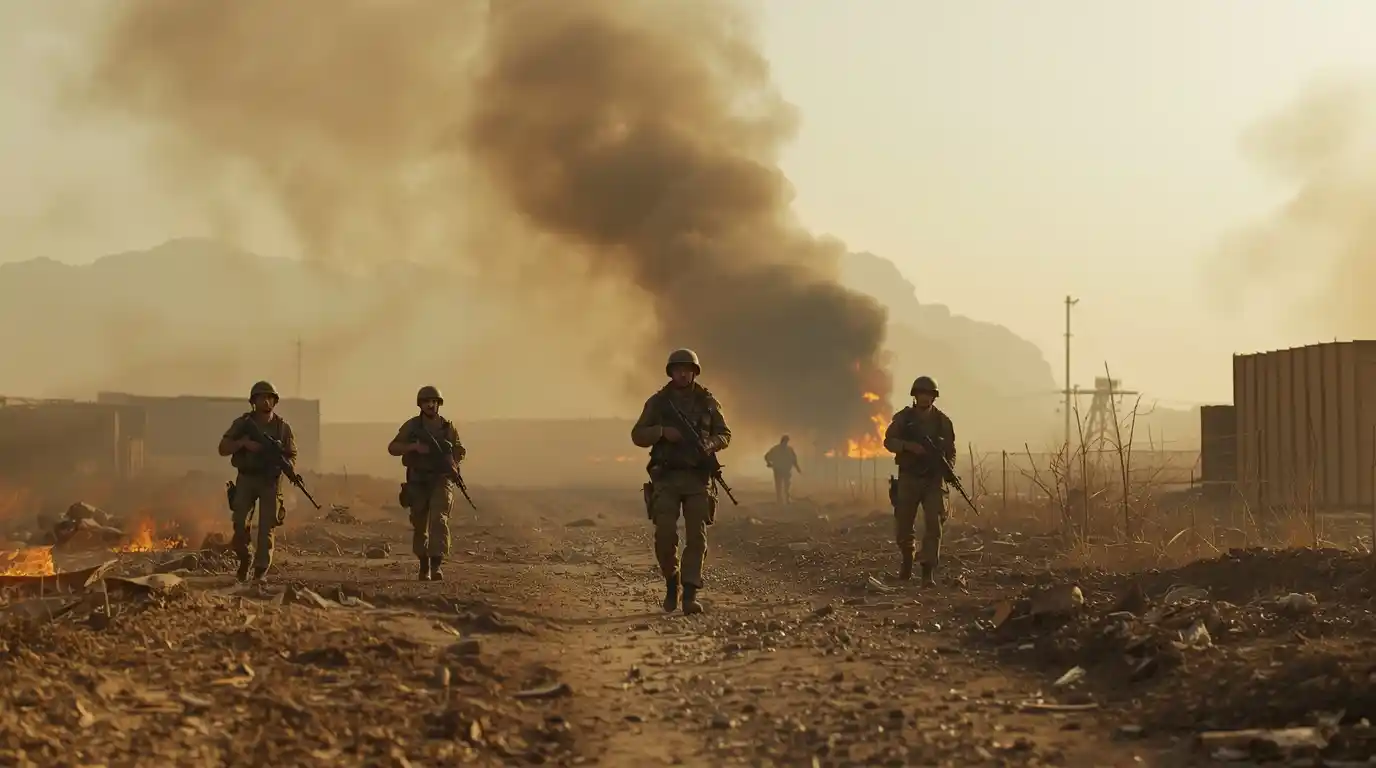A dangerous and deadly new chapter in a long-standing feud has erupted, sending shockwaves through an already volatile region. The recent Pakistan Afghanistan border clash represents the most severe outbreak of violence between the two neighbors in years, marking a dramatic escalation from cross-border skirmishes to sustained, high-intensity combat. This isn’t merely a minor incident; it is a flashpoint with the potential to destabilize South Asia, drawing in global powers and threatening millions of civilians caught in the crossfire.
The events of the past days have seen artillery duels, airstrikes, and direct assaults on military installations, resulting in a significant and tragic loss of life on both sides. This explosive Pakistan Afghanistan border clash is not an isolated event but the culmination of decades of mistrust, a disputed border, and the complex geopolitical aftermath of the Taliban’s return to power in Kabul. Understanding the triggers, the immediate impact, and the potential global ramifications is crucial for grasping the new reality of this conflict zone.
1. The Spark: What Ignited the Clash?
The immediate trigger for this devastating Pakistan Afghanistan border clash was a complex and deadly sequence of events. According to reports from both sides and international observers, the cycle of violence began with a major cross-border incursion.
Pakistani military officials stated that militants operating from inside Afghanistan launched a coordinated attack on a Pakistani military post in the Kurram district, resulting in significant casualties. Pakistan has long accused the Taliban-led government in Afghanistan of providing safe haven to militant groups like the Tehrik-i-Taliban Pakistan (TTP), also known as the Pakistani Taliban.
In response, the Pakistani military conducted a series of “anti-terrorist” airstrikes inside Afghan territory. The Afghan Taliban government confirmed these strikes and reported civilian casualties, a claim that further inflamed the situation. The Afghan military then retaliated with heavy artillery and direct attacks on Pakistani border posts. This tit-for-tat escalation quickly spiraled into the widespread Pakistan Afghanistan border clash we are witnessing today, demonstrating how quickly localized incidents can ignite a wider conflict.

2. The Human Cost: Counting the Dead and Wounded
The human toll of this conflict is both stark and devastating. This latest Pakistan Afghanistan border clash has resulted in the highest single-day casualty figures since the Taliban took control of Afghanistan in 2021.
- Pakistani Casualties: Pakistani authorities have reported the deaths of at least two dozen soldiers, with many more wounded. The attack on the Kurram post was described as one of the deadliest in recent memory for the Pakistani military.
- Afghan Casualties: The Taliban-led government in Afghanistan has reported over 40 casualties, including both civilians and military personnel, primarily from the Pakistani airstrikes. They have vowed a “strong response” to what they call an “invasion” of their airspace and territory.
- Civilian Displacement: As is always the case in such conflicts, civilians are paying the heaviest price. Thousands of families on both sides of the border have been forced to flee their homes to escape the shelling and gunfire, creating a new internal displacement crisis. The Pakistan Afghanistan border clash has turned bustling villages into ghost towns overnight.
3. The Historical Tinderbox: The Durand Line Dispute
To fully comprehend why this Pakistan Afghanistan border clash occurred, one must look back over a century. The root of the tension lies in the Durand Line, the 2,640-kilometer (1,640-mile) border drawn by British diplomat Sir Mortimer Durand in 1893, dividing the ethnically Pashtun and Baloch territories between British India (later Pakistan) and Afghanistan.
No Afghan government, including the previous Taliban regime and the current one, has formally recognized the Durand Line as a legitimate international border. They see it as a colonial imposition that unfairly split the Pashtun population. Pakistan, however, considers it a settled international frontier.
This dispute means the border is not just a line on a map but a zone of perpetual friction. The local populations have familial and tribal ties across the border, and the terrain is rugged and difficult to police. This makes it a perfect conduit for militancy and a constant source of accusation and counter-accusation. The current Pakistan Afghanistan border clash is, therefore, the latest violent manifestation of this 130-year-old grievance.
4. The Taliban Dilemma: A Shifting Relationship
The relationship between Pakistan and the Afghan Taliban is one of history’s great geopolitical ironies, and it is central to this Pakistan Afghanistan border clash. For decades, Pakistan was widely seen as a principal patron of the Taliban, providing them with sanctuary, supplies, and diplomatic support during the war against the U.S.-backed government in Kabul.
However, since the Taliban’s return to power, the relationship has soured dramatically. Pakistan expected a Taliban government that would be accommodating to its interests, particularly in curbing the TTP. Instead, the Taliban in Kabul have adhered to a policy of not interfering in Pakistan’s internal affairs, which has, in practice, meant allowing the TTP to operate from Afghan soil.
This perceived betrayal has been a major point of contention for Islamabad. The current Pakistan Afghanistan border clash is a direct result of Pakistan’s frustration with the Taliban’s unwillingness or inability to rein in the TTP. It marks a dramatic shift from proxy warfare to direct confrontation between two erstwhile allies.

5. Global Repercussions: China, the US, and Regional Stability
The implications of this Pakistan Afghanistan border clash extend far beyond the two immediate adversaries. The conflict threatens to draw in major global powers and disrupt delicate regional balances.
- China’s Dilemma: China has invested billions of dollars in Pakistan through the China-Pakistan Economic Corridor (CPEC), a flagship project of its Belt and Road Initiative. Stability in Pakistan and Afghanistan is crucial for CPEC’s success. Beijing has called for calm and is likely engaging in frantic behind-the-scenes diplomacy, as it has strong ties with Pakistan and is one of the few countries with influence in Taliban-led Afghanistan.
- The United States’ Stance: The United States, while no longer militarily involved in Afghanistan, is deeply concerned about the region becoming a safe haven for international terrorist groups like ISIS-K. The U.S. has a complicated relationship with Pakistan and has urged restraint on both sides, viewing the Pakistan Afghanistan border clash as a dangerous distraction from the counter-terrorism mission.
- Regional Players: India, Iran, and Russia are all watching closely. India may see a weakened Pakistan as advantageous but fears the spillover of terrorism and instability. Iran has its own tensions with the Taliban over water rights and border issues. This clash could create a domino effect of regional insecurity.
6. Military Analysis: Tactics and Technologies Deployed
The nature of this Pakistan Afghanistan border clash provides insights into the military capabilities and strategies of both sides. Unlike previous low-level skirmishes, this engagement has seen the use of more sophisticated weaponry and combined-arms tactics.
The Pakistani military, one of the largest in the world, has demonstrated its reliance on air power for cross-border strikes, using fighter jets and unmanned drones. This indicates a shift towards a more aggressive, pre-emptive posture against militant sanctuaries. Their ground forces are equipped with long-range artillery, which has been used extensively in the shelling duels.
The Taliban, on the other hand, are fighting a conventional battle they did not have to wage during their two-decade insurgency. They are utilizing captured U.S. military equipment, including small arms and heavy machine guns, and have shown proficiency with mortars and other indirect fire systems. However, they lack an air force and sophisticated air defense, putting them at a significant disadvantage in a sustained conflict. This Pakistan Afghanistan border clash is testing the Taliban’s ability to transform from a guerrilla force into a standing army capable of defending a national border.
7. The Humanitarian Crisis: Civilians on the Front Lines
As military and political leaders exchange threats, the true cost of the Pakistan Afghanistan border clash is being paid by ordinary people. The border regions are home to some of the poorest and most vulnerable communities in both countries.
Villages have been caught in the middle of artillery exchanges, with reports of homes being destroyed and farms damaged. Critical supply routes for food and medicine have been severed. The ongoing economic crisis in Afghanistan, one of the world’s worst humanitarian disasters, is now being compounded by the direct effects of war. Aid agencies, including the United Nations and the Red Cross, have issued urgent appeals for a humanitarian ceasefire to allow aid to reach those in need. The Pakistan Afghanistan border clash is not just a military problem; it is a human tragedy in the making.
8. Diplomatic Fallout: Can the Situation Be De-escalated?
The international community has responded to the crisis with widespread alarm. The United Nations Security Council has held emergency sessions, calling for an “immediate and unconditional de-escalation.” The Organization of Islamic Cooperation (OIC) has also offered to mediate.
However, diplomatic paths are fraught with challenges. The Taliban government lacks universal international recognition, making formal state-to-state diplomacy complicated. Pakistan, feeling its national security is under direct threat, may be unwilling to back down without concrete guarantees from the Taliban on curbing the TTP.
The most likely mediator at this stage is China, which has the trust of Pakistan and a working relationship with the Taliban. However, convincing both sides to step back from the brink after such a bloody Pakistan Afghanistan border clash will be an immense challenge. The door to diplomacy is still open, but it is closing rapidly.

9. Conclusion: A Descent into a New Normal?
The recent Pakistan Afghanistan border clash is a grim milestone. It signals the collapse of a fraught but functional relationship between Islamabad and the Taliban into open hostility. The historical baggage of the Durand Line, the ideological challenge of the TTP, and the shifting interests of global powers have created a perfect storm.
This is not a conflict that either side can afford in the long term. Pakistan is grappling with severe political and economic instability at home. The Taliban government is struggling to feed its population and gain international legitimacy. Yet, both are now locked in a cycle of violence that is difficult to break.
The world is watching to see if this Pakistan Afghanistan border clash is a temporary, albeit severe, explosion of violence or the beginning of a new, protracted conflict on the southern rim of Asia. The hope for de-escalation rests on fragile diplomatic efforts and the realization by both sides that there are no winners in this kind of war. The fear, however, is that the guns of October have ushered in a dangerous and unpredictable new era for Pakistan and Afghanistan.
Table of Contents
Reference Website:
https://edition.cnn.com/2025/10/07/us/shutdown-impacts-travelers
Our Related News Website:
Sports: Sport Flash
World News: The News Grid
Environment News: Eco Alert
Business News: Biz Trend Now
Dailt News: Unbiased Daily
Realm News: Real Time Realm
Retrun to our Homepage
